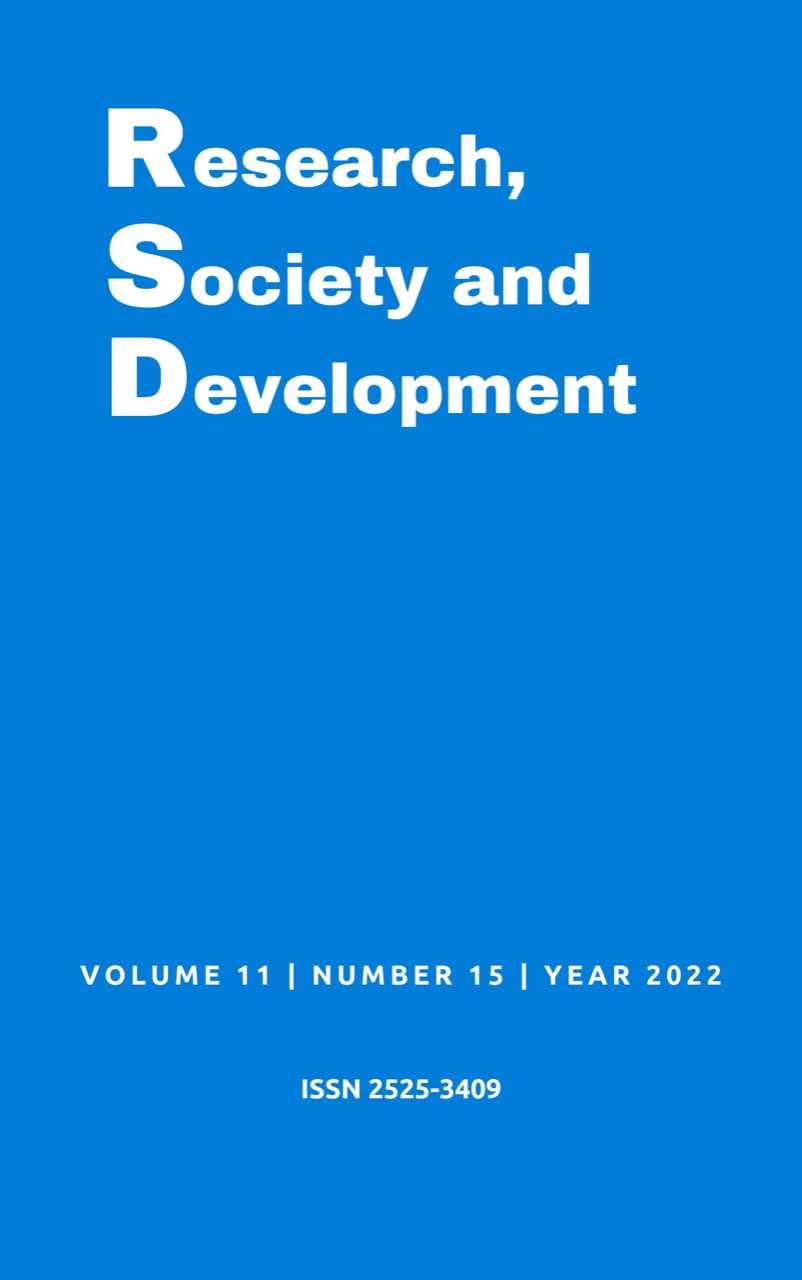Study of commercial stability, alcoholic fermented beverage of cocoa pulp pulps (theobroma cacao) and cajá (spondias mombin)
DOI:
https://doi.org/10.33448/rsd-v11i15.37334Keywords:
Evaluation, Commercial stability, Cocoa (theobroma cacao), Cajá (spondias mombin).Abstract
Cocoa (theobroma cacao), is an economically important crop in several tropical countries. In brazil, the cocoa agroindustry occupies a place of expression in the north and northeast regions, which stands out among those used in seed production, as they are used as raw material for chocolate manufacturing, and the pulp of these fruits is little used in the food industry. The cajá (spondias mombin), has wide tropical distribution, this fruit is, today, cultivated in the north and northeast regions, and can also be known as taperebá, is of flavor, aroma and color suitable for the conquest of the most demanding palates. The objective of this study was to evaluate the commercial stability (shelf life) of the alcoholic fermented beverage of cocoa and cajá pulps, of the following experimental formunation called, fa2 (40% cocoa 60% cajá), where chemical physical attributes of: ph, volatile acidity, fixed acidity, vitamin c, total sugars, reducing sugar and alcohol content, lasting a period of 90 days were evaluated. The results remained stable in the period of commercial stability analyses (shelf life), and significant reductions were observed, more than small, in the physical chemical parameters analyzed at time zero (0) at 90 days, shown by the means and standard deviation (n=3), and by the tukey test at 5% (p≤0.05). The alcoholic fermented fa2 (40% cocoa and 60% cajá) showed to be a great economic and nutritional potential for the regions of the cerrado tocantinense and sul pará region, contributing to the generation of income of these communities and adding value to the commercialized product.
References
Aoac, (2012). Association of Official Analytical Chemistry. Official methods of analysis. (19th ed.), Gaithersburg.
Brainer, M. S. C. P. (2021). Produção de Cacau. Caderno Setorial ETENE. 1(1) 2021. https://www.bnb.gov.br/s482-dspace/bitstream/123456789/650/3/2021_CDS_149.pdf.
Borges, E. M. E. S., Silva, F. L. H., Ferreira, A. L. de O., & Medeiros, L. L. (2021). Cocoa pulp (Theobroma cacao L.) as a substrate in the preparation of potentially probiotic. Research, Society and Development, 10(11) https://doi.org/10.33448/rsd-v10i11.19002.
Brasil (2012.), Ministério da Agricultura, Pecuária e Abastecimento. Instrução Normativa nº 34 de 29 de novembro de 2012. Estabelece a complementação dos padrões de identidade e qualidade para as bebidas fermentadas. Diário Oficial da União, Brasília, DF, n. 231, seção 1, p. 3-4, 30 nov. 2012.
Costa, A. G., & Mercadante, Z. A. (2017). In vitro bioaccessibility of free and esterified carotenoids in cajá frozen pulp-based beverages. Journal of Food Composition and Analysis, 68, 53-59.
Emater Pará, Empresa de Assistência Técnica Rural do Estado do Pará (2020). Curionópolis festeja 27 anos com recorde na produção de taperebá. https://agenciapara.com.br/noticia/18175/.
Ferreira, G., Fonseca, A. A. O., Júnior, M. M. N., Lima, J. G. F., Jesus, R. S., Hansen, D. D. & Silva, S. M. P. C. (2020). Desenvolvimento, avaliação sensorial e da estabilidade físico-química de um fermentado alcoólico de maracujá-do-mato (passiflora cincinnata mast.) Durante o armazenamento. Brazilian journal of development. 6(8), 58064–78. Doi: 10.34117/bjdv6n8-280. Disponível em: https://brazilianjournals.com/ojs/index.php/brjd/article/view/14986. Acesso em: 29 oct. 2022.
Instituto Adolfo Lutz, (2008). Métodos Físico-Químicos para análise de alimentos. (4a ed.).
Matietto, R. A; Lopes, A. S., & Menezes, H. C. (2010). Caracterização física e físico-química dos frutos da cajazeira (Spondias mombin L.) e de suas polpas obtidas por dois tipos de extrator. Brazilian Journal Food Technology, 13(3), 156-154. 10.4260/BJFT2010130300021.
Muniz, J. A.; Nascimento, M. S., & Fernandes, T. J. (2017). Nonlinear models for description of cação fruit grow thwit hás sumption violations. Revista Caatinga. 30(1), 250-257.
Oetterer, M.; Regitano D. A., M. A. B., & Spoto, M. H. F. (2006). Fundamentos de Ciência e Tecnologia de Alimentos. Barueri: Manole, 2006. 612 p.
Pinto, L. I. F.; Araújo, M. M. N.; Amaral, N. M.; Melo, S. C. P.; Zambelli, R. A.;Pontes, D. F.(2015). Desenvolvimento de bebida alcoólica fermentada obtida a partir de resíduos agroindustriais. In: congresso brasileiro de engenharia química, 20., 2014, Florianópolis. Anais COBEQ. Florianópolis, 2015.
Silva, F., Pinedo, A., Bezerra, R., & Coelho, B. (2021). Análise sensorial da geleia mix das polpas de Cagaita e Mangaba. Boletim do Centro de Pesquisa de Processamento de Alimentos, 37(1).
Silva, F. de A.S. Assistat, versão 7.1 beta (2015). Campinas Grande-PB: Assistência Estatística, Departamento de Engenharia Agrícola do CRTN – Universidade Federal de Campina Grande, Campus de Campina, Campina Grande. https://www.assistat.com>.
Silva, J. & Dantas, C. (2017). Fermentado alcoólico de umbu: produção, cinética de fermentação e caracterização físico-química. Holos. 2. 108. 10.15628/holos.2017.4506.
Silvino, R., Silva, G., & dos Santos, O. V. (2017). Qualidade nutricional e parâmetros morfológicos do fruto cajá (Spondias Mombin L.). DESAFIOS - Revista Interdisciplinar Da Universidade Federal Do Tocantins, 4(2), 03-11.
Downloads
Published
Issue
Section
License
Copyright (c) 2022 Leandro Santos Silva; Flavio Santos Silva; Abraham Damian Giraldo Zuniga

This work is licensed under a Creative Commons Attribution 4.0 International License.
Authors who publish with this journal agree to the following terms:
1) Authors retain copyright and grant the journal right of first publication with the work simultaneously licensed under a Creative Commons Attribution License that allows others to share the work with an acknowledgement of the work's authorship and initial publication in this journal.
2) Authors are able to enter into separate, additional contractual arrangements for the non-exclusive distribution of the journal's published version of the work (e.g., post it to an institutional repository or publish it in a book), with an acknowledgement of its initial publication in this journal.
3) Authors are permitted and encouraged to post their work online (e.g., in institutional repositories or on their website) prior to and during the submission process, as it can lead to productive exchanges, as well as earlier and greater citation of published work.


